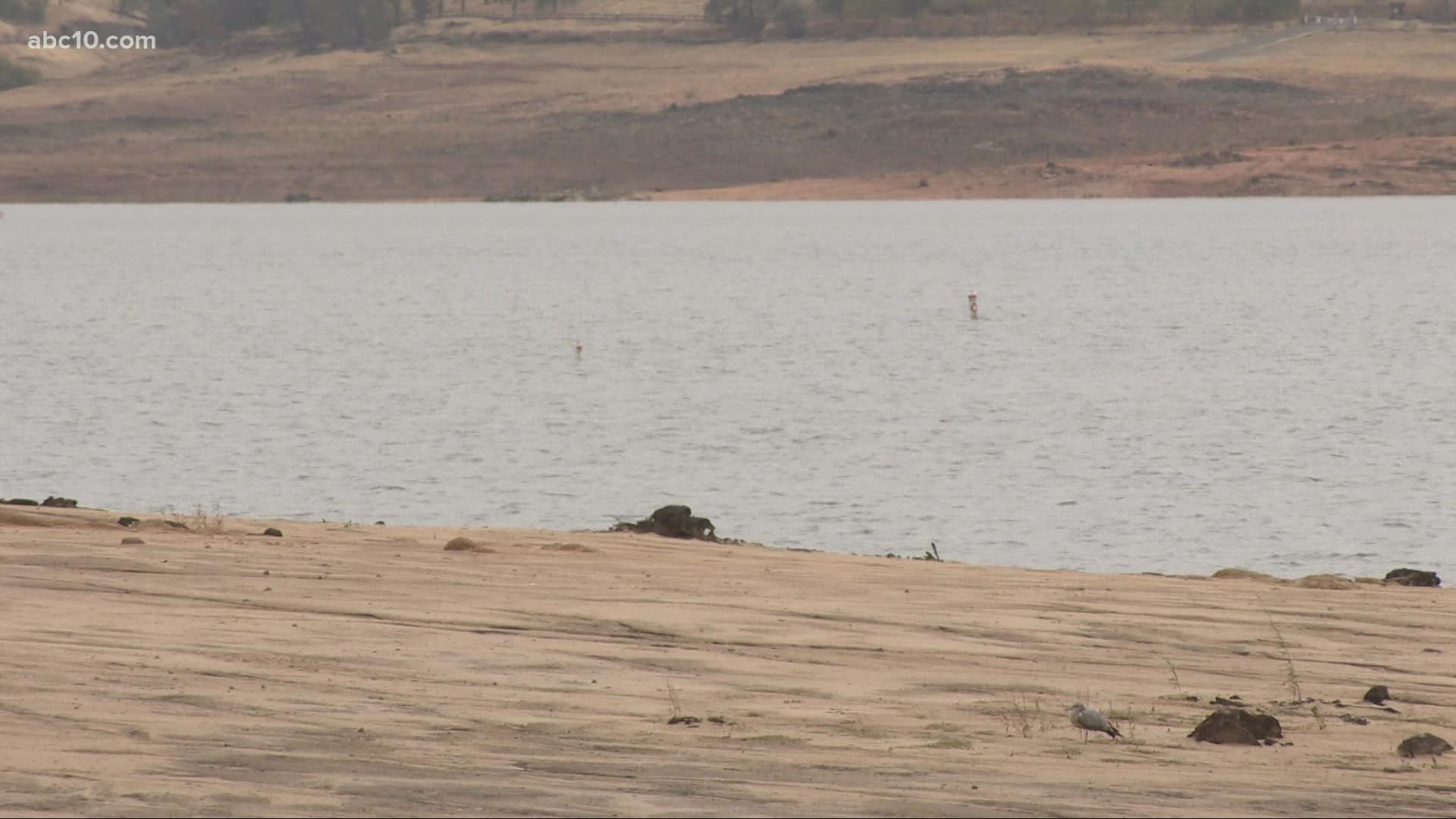CALIFORNIA, USA — The longest winter dry streak was finally broken after 66 days, breaking the previous winter record of 52 days set in 2013-2014.
On March 15th, the rain finally arrived. The last significant rain was Jan. 7, 2022 in Downtown Sacramento. Now, that the rain has returned, is there enough to save the current drought situation?
Another storm is expected to arrive on March 18 to March 19, bringing potentially higher rain and snow totals to Northern California. Even with this storm approaching, it may be a little too late.
Snowpack manager, Sean De Guzman with the Department of Water Resources, says the state would need 28 inches of snow water to bring the state to average. Right now, collectively, the state sits around 16 inches. That means the state would need 12 inches of snow water from March through as late as early May to reach average.
California’s Mediterranean climate brings very dry and warm summers and cooler but wet winters. The swings of climate change causes years to be variable. Summers have extended and have caused fires as late as November and December with little to no rain. Meanwhile, winter months have been short-lived.
April 1 is the peak of snowpack and is typically a cut-off date for California climatologists. If any storms move through, they usually bring less considerable rain. The Department of Water Resources uses April 1 as a water average because of the infrequent storms.
With a wonderful start to the water year in October and big snow storm impacts in December, the last few months without rain have made it harder for researchers to forecast snow-pack runoff into the summer months.
“With climate change, we don't know how much has been affected with how dry it's been over the last two months, maybe those soils did dry up. But you know, time will tell once we get towards the end of summer how much water actually fills up those reservoirs,” De Guzman said.
Even with a solid snowpack, without moist soils, we often lose a lot of our snowpack to run-off. A lot is absorbed by trees and also lost to evaporation.
De Guzman says we would need our snow depth to be about 60 inches to bring in that 28-inch snow water equivalent. Snow water equivalent varies with each storm and where it comes from. Colder storms hold water better and for longer. Warmer storms are often lost to run-off.
Regardless, De Guzman says we're so far behind at this point, the odds are against us to get back to normal and out of drought.
"We might actually have about an average March once we get through March. But adding average to well below average the last two months, it's still gonna equate out to below average conditions" De Guzman said.
WATCH ALSO:



















